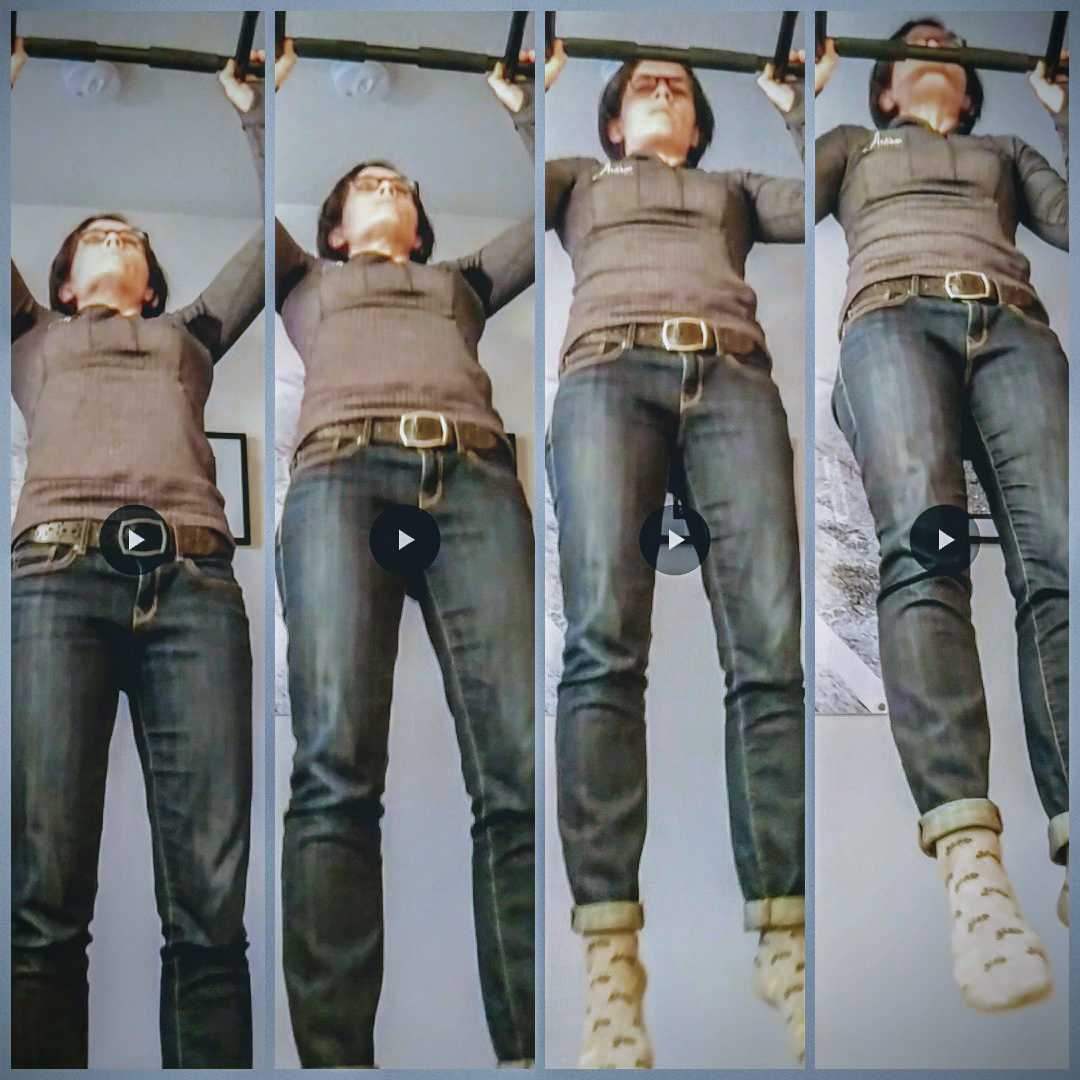Pull-ups. Pull-ups can be an arch nemesis for some, yet pull-ups are essential to advancing rock climbing potential.
This January I've been continuing my daily fitness challenge, that I began in October of 2017. The first month I ran, the next month I did abdominal exercises everyday, and December I did and 7 minute body weight exercise routine, and in January, right now, everyday I'm doing pull-ups.
I've been able to do pull ups for a long time. Meaning I have had the strength to do pull ups for a long time. But strength is different than endurance. If I want to climb long or hard I need to have the endurance to sustain myself. So my pull-up challenge this month is important for my performance while climbing.
But first and foremost I'm using it as a transition from not climbing for almost a year back into climbing. The progressive loading through my finger flexor tendons my joints, my finger pulleys, my lats, my shoulders, and my rotator cuff will be essential to the health of those tissues as I transition back into climbing. (Let's be honest: gripping to the edge of a cliff for dear life is not the most normal thing for the human body, but it sure is fun!) The body does the best with slow sequential loading, with time for recovery, and time for the body to rebuild and remodel. While I have the strength and ability to climb brief bursts of climbing at the level I did when I stopped a year ago, my tissues haven't been repeatedly loaded over that time and are vulnerable. This is a common mistake that people make that leads to injury. People often want to start off where they left off, regardless of the time that has transpired since their last participation in the activity. What I encourage my patients and clients to think of when they're deciding their activity level is not - what did they do the last time they did it - but rather - how much of those movements and activity and similar loading of the joints and muscles and tendons have you done in the past few days, weeks, and months. This should be your guide. Increase slow from what you've done recently. In this way you're building your body to be healthy for a lifetime.
So'm getting back to climbing, but not before I begin with some progressive loading off the wall. Because of my baseline strength, pull-ups are sufficiently safe, but for others starting with partial weight gripping and pulling would be much more appropriate. I started with 10 pull-ups per day and added 10 pull-ups per week until the end of the month. Always mixed in with in my workouts is common sense and listening to my body. I'm always having a conversation with my body to determine whether I should do something or not and I modify as needed to stay healthy. No fitness challenge should lead you to unhealth.
P.S. Going now to stretch these lats that are getting overloaded through pull-ups, and soon, climbing!
Let's Get to the Source - and TOGETHER - Let's Get Moving
Liz

